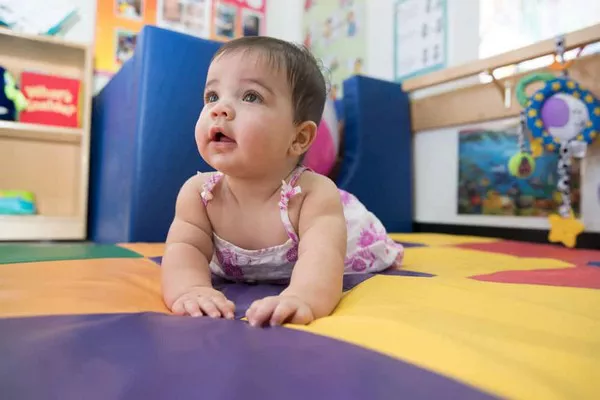The developmental milestones that babies achieve in their first year are both exciting and fascinating for parents and caregivers. One of the major milestones that parents eagerly anticipate is their baby’s ability to crawl. While babies develop at their own pace, many begin to explore the world by crawling around 6 months of age. In this article, we delve into the topic of crawling and explore whether it is common for babies to start crawling at 6 months.
Understanding the Developmental Progression:
Babies progress through a series of milestones in their journey towards independent movement. Before crawling, they typically go through stages of rolling, pushing up on their hands, and sitting independently. These foundational skills help babies develop the necessary strength, balance, and coordination to transition into crawling.
Varied Timelines for Crawling:
It is important to note that every baby is unique, and there is a wide range of normal when it comes to developmental milestones. While some babies may start crawling around 6 months, others may begin a little earlier or later. Some babies even skip crawling altogether and move directly to standing or walking. It is essential to focus on individual progress rather than comparing babies to arbitrary timelines.
Early Signs of Readiness:
There are certain signs that indicate a baby may be ready to start crawling. These signs can manifest themselves around 6 months of age, but again, every baby is different. Some early signs of readiness for crawling include:
Increased mobility:
Babies may start to roll more frequently or move around by scooting on their stomachs or shuffling on their bottoms.
Strong upper body strength: Babies need to have good control of their upper body, including their neck, arms, and shoulders, to support themselves during crawling.
Improved coordination:
Babies will demonstrate improved coordination in reaching and grasping objects, which helps them develop the necessary motor skills for crawling.
Encouraging Crawling:
While the exact timing of crawling is individualized, there are ways to encourage and support your baby’s development. Here are some strategies to promote crawling:
Tummy time:
Regular and supervised tummy time sessions help strengthen the baby’s core muscles, improve head control, and encourage the use of arms and legs for movement.
Creating a safe environment:
Set up a safe and baby-proofed area where your little one can freely explore and practice crawling without any hazards.
Providing opportunities for movement: Place enticing toys just out of reach to motivate your baby to reach, crawl, and explore their surroundings.
Gentle encouragement:
Engage with your baby during tummy time, offering verbal encouragement, smiles, and praise to create a positive and supportive atmosphere.
Consulting with Healthcare Professionals:
If you have concerns about your baby’s developmental milestones, including crawling, it is always wise to consult with your pediatrician or healthcare provider. They can assess your baby’s growth and development, address any concerns, and provide guidance tailored to your little one’s specific needs.
The Benefits of Crawling:
Crawling offers several benefits for a baby’s overall development. It serves as an important precursor to other forms of locomotion, such as walking, and aids in the development of various skills, including:
Motor Skills:
Crawling helps strengthen the baby’s muscles, particularly those in the upper body, core, and limbs. As they push themselves off the ground and coordinate their movements, they develop better control and coordination of their muscles, leading to improved gross motor skills.
Spatial Awareness:
Crawling allows babies to explore their environment from a lower perspective. As they navigate their surroundings, they gain a better understanding of spatial relationships, depth perception, and object permanence. This enhanced spatial awareness lays the foundation for future cognitive skills, such as problem-solving and spatial reasoning.
Sensory Stimulation:
Crawling exposes babies to a wealth of sensory experiences. As they move across different textures, surfaces, and objects, they engage their senses of touch, sight, and proprioception (awareness of their body in space). This sensory input helps stimulate their brain and promotes sensory integration.
Conclusion:
Crawling is an exciting milestone in a baby’s journey towards mobility and independence. While it is common for babies to start crawling around 6 months, it is essential to remember that every baby develops at their own pace. The progression towards crawling is influenced by a variety of factors, including individual strengths, coordination, and motivation. By providing a safe and nurturing environment, along with ample opportunities for exploration and movement, parents can support their baby’s development and help them reach their milestones in their own time. Remember, the joy lies in celebrating your baby’s unique journey of growth and discovery.


